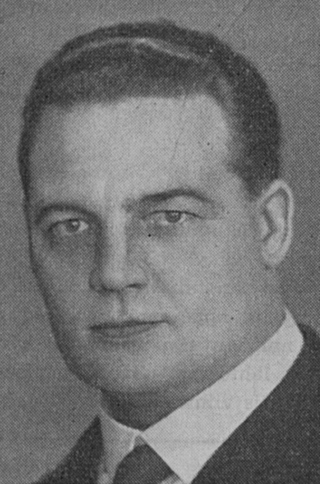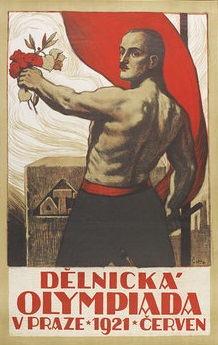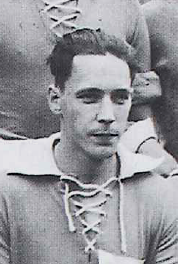
The 1952 Summer Olympics, officially known as the Games of the XV Olympiad and commonly known as Helsinki 1952, were an international multi-sport event held from 19 July to 3 August 1952 in Helsinki, Finland.

The Finland national football team represents Finland in men's international football competitions and is controlled by the Football Association of Finland, the governing body for football in Finland, which was founded in 1907. The team has been a member of FIFA since 1908 and a UEFA member since 1957.
Tul is a Korean martial art form.
Ragnar Olof Jakob Stenberg was a Finnish sprinter and a sports leader.

Heikki Heikinpoika Lehmusto was a Finnish sports leader and a sportswriter, who won bronze in the 1908 Summer Olympics.

Viktor Reinhold Smeds was a Finnish sportsleader and a boxer, who also won an Olympic bronze in gymnastics.

Toivo Nestori Aro was a Finnish sports leader and an aquatics athlete who won 10 Finnish championships.

Pyrkivä Turku, Finnish Turun Pyrkivä, earlier Maarian Pyrkivä is a sports club from Turku, Finland, which was founded in 1906 by sportsmen who represented artistic gymnastics.
International Workers' Olympiads were an international sporting event arranged between 1925 and 1937 by Socialist Workers' Sport International (SASI). It was an organisation supported by social democratic parties and International Federation of Trade Unions. Workers' Olympiads were an alternate event for the Olympic Games. The participants were members of various labor sports associations and came mostly from Europe. Nowadays the CSIT World Sports Games are the successor sports events of the International Workers' Olympiads. The "World Sports Games" is the main highlight and a new brand of the International Workers and Amateurs in Sports Confederation (CSIT). It is a sports event for thousands of workers and amateurs held every two years. The CSIT is an international multi-sports organization.
Turun Weikot is a sports club from Turku, Finland. It was established in 1912. TuWe is organized in seven sections; football, athletics, bowling, boxing, gymnastics, volleyball and weightlifting. The club is a member of the Finnish Workers' Sports Federation.

Finnish Workers' Sports Federation football team was an association football team representing the Finnish Workers' Sports Federation (TUL) in 1921–1950. At the time, the sport in Finland was divided as the leftist TUL was isolated from the right-wing sports movement. In football, the TUL clubs and the Finnish Football Association (SPL) clubs competed in their own championship series and the Finland national football team was selected of the SPL players only. The TUL football team participated the International Workers' Olympiads in 1925, 1931 and 1937 and the Moscow Spartakiad in 1928.

1921 Workers' Olympiad was the first unofficial edition of the International Workers' Olympiads, organized by the 1920-established Lucerne Sport International and hosted by the Czechoslovakian Workers' Gymnastic Association in Prague, Czechoslovakia. The original scheduled date was August, but finally the games were held from 25 to 29 June 1921. The first official Workers' Olympiads were held in 1925 in Schreiberhau (Winter) and Frankfurt am Main (Summer) in Germany. The unofficial Czechoslovakian games were staged again in 1927 and 1934.

Kaarlo Vilhelm "Kille" Oksanen, born 11 January 1911 in Helsinki, died 14 October 1941 in East Karelia, Soviet Union, was a Finnish footballer and film actor who was killed in World War II.

Karl Viljo Halme was a Finnish football goalkeeper. He earned 30 caps for the Finland national football team and was a member of the Finland squad at the 1936 Summer Olympics. Halme is considered one of the all-time best goalkeepers of Finland.
Kurt Gunnar Weckström was a Finnish footballer. He earned 35 caps for the Finland national football team and was a member of the Finland squad at the 1936 Summer Olympics.

Eino Oskari Pekkala was a Finnish lawyer and politician. He was a member of the Parliament of Finland, representing the Socialist Electoral Organisation of Workers and Smallholders 1927–1930 and the Finnish People's Democratic League 1945–1948. In the 1920−1930s, Pekkala was twice in prison for his political activities, and he was even kidnapped by the fascist Lapua Movement in 1930. As the political situation in Finland changed after the World War II, Pekkala was the Minister of Education 1945–1946, and the Minister of Justice 1946–1948.
Kotkan Kiri is a Finnish sports club from the city of Kotka.
Helsingin Kullervo is a football club from Helsinki, Finland. The club was formed in 1919. It used to participate in number of sports including Bandy, Ice Hockey, Pesäpallo and Athletics but now concentrates only in Football. The club is a member of the Finnish Workers' Sports Federation, abbreviated as TUL. In its early days, Club was a powerhouse in TUL Sports, they won several TUL championships in Football, Pesäpallo, Bandy and Athletics.
Tampereen Kisatoverit (TKT) is a Finnish multi-sport club from Tampere. They have activity in football, gymnastics, arm wrestling, and volleyball.
Kemin Into, is a Finnish sports club based in the town of Kemi. Founded in 1907, they have sections in gymnastics, wrestling, boxing, bowling and basketball. Club owns a campsite in 8 km south of Kemi. Kemin Into is a member club of Finnish Workers' Sports Federation
















